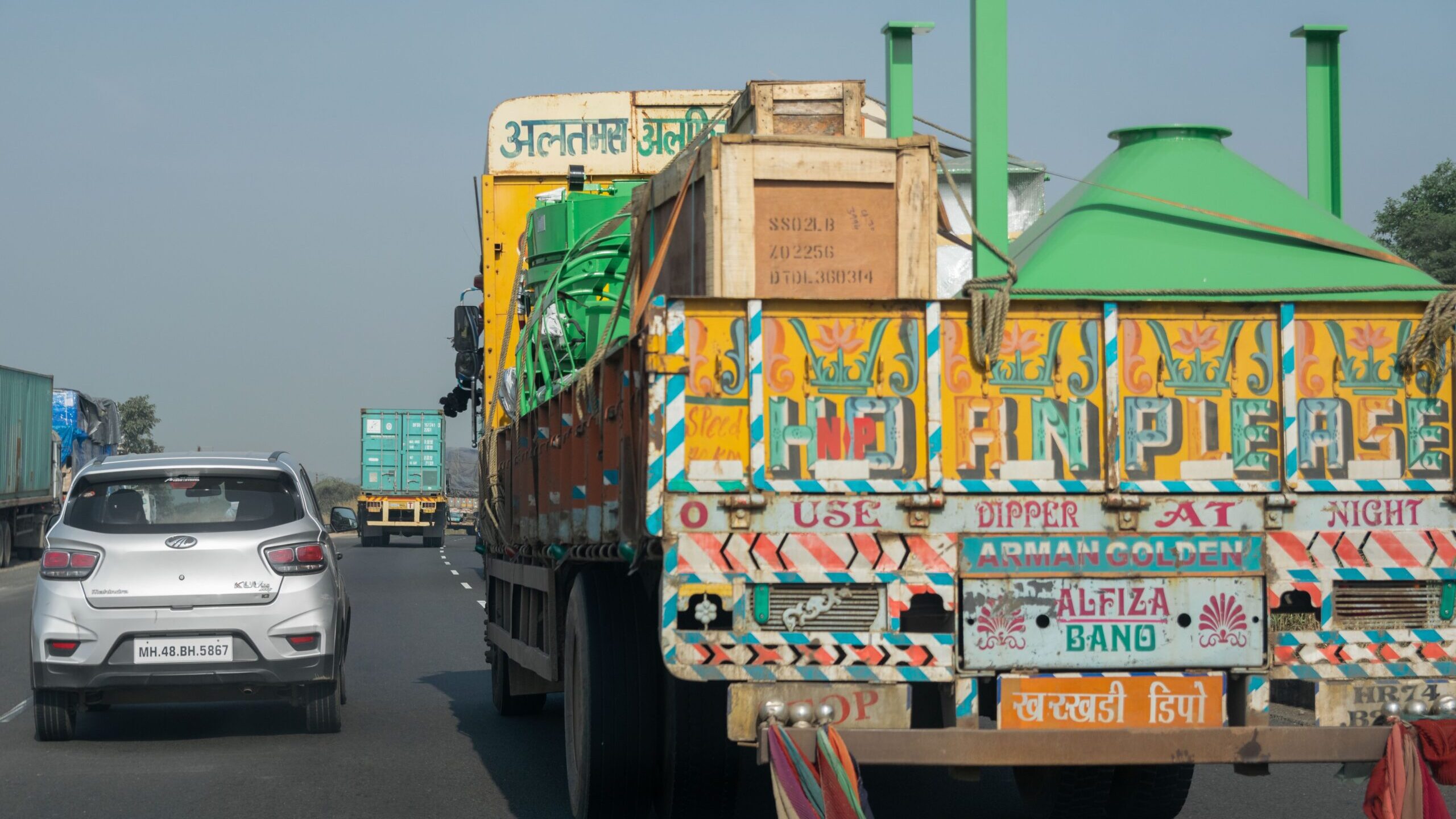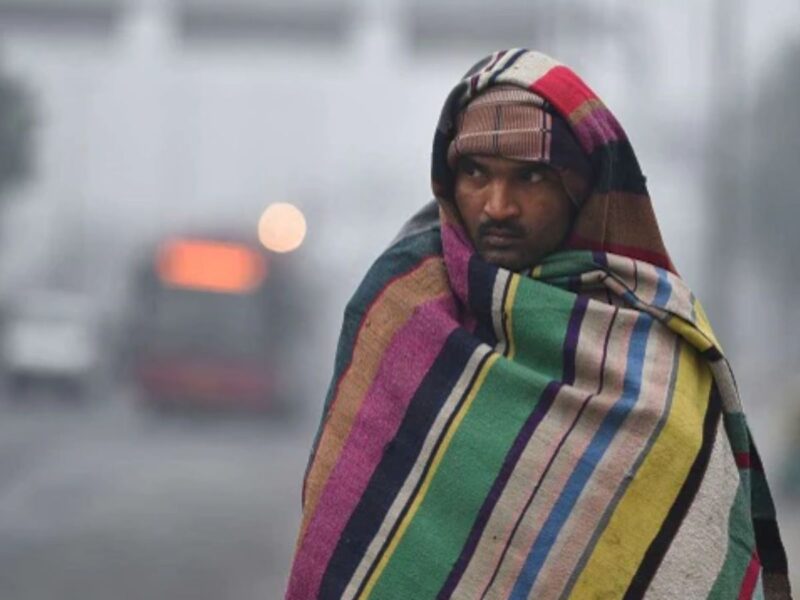Gopal Singh, a truck artist at Khanpur Depot in south Delhi, is at work, his fingers dipped in a container of paint. “A truck driver spends most of his day and night in his truck, it is obvious that the truck becomes his humble abode,” he says. “And how do we want our home? Similarly, the drivers of these big bulky trucks come up to me with their ideas for what could make them feel close to home.”
Birds and daffodils are Singh’s speciality. He elaborates, “While there are several patterns, one of the most common motifs painted on trucks is a white cow nuzzling its calf. It is symbolic of the driver’s yearning for his mother while he is on the road, or the understanding that he will always be protected by her. On the other hand, the eagle represents speed but also the underlying truth that no matter how far we go in our lives, we belong to our home.”
Singh, 62, has been in the business of painting trucks for 20 years. His mantra for success? “A good artist knows his customers well,” he explains. “I know what the drivers would want to make me draw. They are very participative in terms of explaining their views about the illustrations.”
His charges, though, are paltry, ranging between Rs 150 for a cow and lion and Rs 50 for an eagle, depending on the size.
Truck art has been an integral part of India’s visual heritage for decades. From a damsel dancing in a diaphanous dress to a blooming lotus, or a menagerie of tigers and elephants roaming in the midst of wing-flapping birds — all of these come alive on the iron panels of the trucks that criss-cross the sub-continent.
They bring colour and cheer on highways— bold hues of green, tangerine and ruby red on what would otherwise be drab lorries. There are hand-painted symbols, elaborate patterns, and quirky slogans with bold typography, the most famous being ‘OK Tata’ and ‘Horn Please’.
Customised designs
Asif Dhan, 64, is a truck painter based in Delhi’s Sanjay Gandhi Transport Nagar. Khan has been witness to the changing themes and patterns in truck art and calligraphy.
He recalls, “I have vivid memories of the 1980s. I used to paint huge elephant insignia on almost all the trucks that came to me. It was right after the Asian Games in 1982, whose mascot was the image of an elephant. Truckers wanted me to paint such images back then”.
These days, he says, tastes have become more sophisticated. “Drivers ask me to paint shayari (Urdu poetry) or religious motifs. I rarely see the innocence and charm that once ruled.”
Nonetheless, Khan concedes, the patterns also help the artists understand what’s the mood of the truckers. He says, “It is through these images, iconography and calligraphy that the drivers express themselves. It is sort of a collective identity of the truckers in a particular demographic.”
He reveals that Delhiite truckers prefer insignia of birds and animals like tiger and eagle. And if the trucker is Muslim, he would have a picture of Taj Mahal painted on his truck. If the driver is Punjabi, Khan says, then the truck is more likely to carry the painting of a girl apparently waiting for her beloved’s homecoming, with the phrase, ‘Ghar kab aaoge?’ (When will you return home?).”
Another poignant feature of Punjabi trucks is the portrait images of Bhagat Singh, the revolutionary freedom fighter who was a native of Punjab and after whom Chandigarh’s airport is being named. Khan has painted ‘thousands’ of trucks with such images.
Pankaj Das, 24, is a customer who has come to Khan’s workshop near Sanjay Gandhi Transport Nagar. While Khan is busy attending another driver, Das talks to Patriot about his concept. He states, “I want a slogan painted on my truck. It should be catchy and yet meaningful. How about ‘Beti bachao beti padhao’ (Save girls, educate girls)?”
Slogans galore
Ankur Sharma, another artist at the workshop, overhears the conversation and immediately jumps in. “Yes, the drivers look for slogans that the government of India envisaged for awareness. Be it the rights of a girl child or road safety, social awareness messages have become the default writing on most trucks. It is simple!”
There may be another reason why such slogans are popular. Mohan Raj, 33, a truck designer at Ghazipur depot says the trucks in north India get registration certificates more easily if slogans about the government’s flagship programs are painted on the trucks.
“I charge around Rs 500 to paint a slogan. It takes time to paint the lines, unlike an insignia. So, it is fair to charge this much. Sometimes, I charge higher considering the demand. My father is also a painter and while growing up I would observe my father calmly painting couplets on the truck. I must say that it requires focused vision. Hence, it took me five years to finally work independently.”
Truck drivers and painters alike in Delhi have noticed that the slogans for the government’s flagship remain consistently in demand. The slogan ‘Jai jawan, jai kisan’ (Hail the soldiers and farmers) given by Prime Minister Lal Bahadur Shastri in 1965 obviously had resonance in the old days.
For 67-year-old Raghu Chauhan, sipping tea at his workshop at Sangam Vihar, South Delhi, trucks are like a blank canvas. It is the colours and intricate details that truly reflects truckers’ emotions, aspirations, faiths and cultural roots.
“I believe that any form of art is a potent symbol of a particular ethos,” he says. These days, the truckers don’t ask me to paint the classic ‘Horn please’! Maybe, it lands them in trouble because people might take it literally and keep honking!” However, phrases like ‘Keep distance’ still remain a popular choice.
Broader view
Manjit Thakur is a truck driver at Badarpur. His truck cabin is decorated like a bride, with ornaments and flowers. He wants to keep his cabin decorated because it gives him a feeling of contentment and safety. Thakur, 73, is teaching his youngest son, 20, the art of painting trucks.
With a beaming smile on his face, Thakur says, “Truck art has been a subject of research for various art scholars around the world. Unfortunately, I never went to school but my kids have. They like to draw and hence, I am teaching them at an early stage of their lives how to hold the brush and paint patterns.”
In the scorching heat with no hope of rain, wearing scruffy clothes, Thakur dips his brush in colours of indigo and rusty red, and glide it across the truck’s sturdy body, defining the petals of the flowers. He is explaining the movement of the paint brush to his son while songs from old Bollywood films play on his mobile phone.
Dubbed ‘folk art’
According to a research study ‘Visual Semiotics of Truck Art in India: From Art on Trucks to a Digital Art Style’, submitted by Ashima Madan to the University of Dublin, “Truck decoration is a popular and entertaining form of folk art that originated in the Indian subcontinent as trucks and lorries driven by Sikh transporters started painting a portrait of their spiritual Gurus, or the founders of the Sikh religion. The portraits were painted with the loudest of colours and crude aesthetics. Simultaneously, Muslim transporters and drivers began to paint portraits of famous Sufi saints on their trucks and lorries.”
Before this, in 2013, Indian scholar Shantanu Suman published his Master’s dissertation at University of Florida exploring the subject from the perspective of design and culture. He went on to create a well-researched award-winning documentary titled Horn Please that traces various components of the practice through interviews and field work.
Two coffee table books appreciating the beauty of Indian trucks and relishing the wit of the quotes on their back came out in 2014 by the same name – Horn Please: The Decorated Trucks of India by photographer Dan Eckstein, and Horn Please: Trucking in India by Pawan Jain and Divya Jain. The former is a collection of pictures while the latter is an attempt by Safexpress, a logistics company, to advocate for better policies and legal support for truckers.
DIY stickers
Post-Covid, times have changed drastically. Very few truckers come to get their trucks painted as readymade stickers can be bought off the shelf. Prabhjot Kaur, 46, an artist by profession who has no work these days, sits on a platform outside a garage in Pushpa Vihar bemoaning the end of what was once a flourishing art form.
“Over the last few years, pre-painted trucks and DIY stickers, which make for a cheaper alternative, hit the market. There’s rarely any work now. I plan to go back to my village in Uttar Pradesh next week. At least I would have enough to eat there!”
Similarly, Naveen Kumar at Maidangarhi bus stand, is staring at passersby in a sullen mood. He says, “New technology has made things simpler for the people and harder for us. My father and forefathers had his own transport business. I grew up looking at them painting trucks, it was such a delight back then. But in the past five years, we have struggled the most. We don’t have work. Hardly, a trucker or two comes a day to get their vehicles painted. I see these stickers growing popular among truckers. I wish those days would come back.”
For more stories that cover the ongoings of Delhi NCR, follow us on:
Instagram: instagram.com/thepatriot_in/
Twitter: twitter.com/Patriot_Delhi
Facebook: facebook.com/Thepatriotnewsindia





